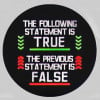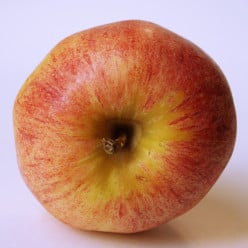Is there a limit to how big a raindrop can be?
Is there a limit to how big a raindrop can be?
And yes I'm serious. I really wondered today if anyone has every tried to figure it out. I imagine it would have a lot to do with air pressure and temperature change and the rate at which the water is condensing in the clouds but I'm no meteorologist.Contrary to common thought individual droplets inflate and then explode to create the smaller droplets so common at ground level. As they travel, drops flatten from a sphere into a pancake-like disc; this catches passing air and inflates like a liquid parachute that eventually explodes in a shower of smaller droplets. Most are under a millimeter across, but others span 5 mm – and providing rainfall level is constant, drops exhibit the same variation in every shower.

The size of a raindrop unsurprisingly varies by the type of rain. A Light stratiform rain - a drizzle- will produce tinier raindrops as small as half a mm across to 2 mm. A heavier rain may produce drops 1 mm diameter to 3 mm. Thundershowers may produce anything from 1mm to 5 mm. Due to the surface tension and water viscosity I suspect it cannot get more than half a cm across. Larger drops simply collide and break up higher up.
Hailstones however can be as large as 4 cm across (ouch)!It's usually around 4 millimeters. If a raindrop gets any larger than 4 millimeters, it will "usually" split into two separate drops.
It depends on what the water is dripping off (or out) of, but generally, a drop of water ranges from .5 millimeters in diameter to 8 millimeters in diameter. Once it gets to 4 mm, however, it will most likely split into two. Weather is a big factor, and raindrops the size of 8 mm will be involved with a large thunderstorm with the right conditions.. (anything measured above 5 mm is considered uncommon).
You may have noticed that there are several hubers who have given you very good information about the sizes of rain drops, and my position that there is no need for me to write repeat information on the same data.
However, I will give you an interesting story. I live in Franklin, Tennessee which is a Civil War town (the Battle of Franklin, a very decisive war) was fought here.
I was lucky enough to be asked to work on the movie set of "The Last Castle," a movie that used Robert Redfort and out popular actors to make this prison movie.
Getting back to rain, real rain droplets are too small for the movie cameras to pick up well, so sprinkler systems were used to create the effects of rain, because droplets from the sprinkler system are much larger, allow the movie camera to "see" the droplets easier, for a much better effect.
I learned a lot working on this movie set which was a Graceworks production.
Take care.
Regards,
Dr. HaddoxDo you know how raindrops are formed? Read this hub.
The Cloud Maker: Pseudomonas Syringae
http://watergeek.hubpages.com/hub/The-R … s-syringaeI think, it's related to adhesion. It might have been investigated under laboratory conditions.
It depends on the amount of rain occurring. Drizzles result in the formation of small raindrops, heavy rainfall results in big raindrops. Plus it depends on the adhesive force between the surface and water molecules. So, there is no limit to how big a raindrop can be. Anywayz, Nice Question!

Related Discussions
- 7
Why is it that rain drops but snow falls?
by ChilliWilly 14 years ago
Why is it that rain drops but snow falls?
- 3
Why are the rain drops of a different size each time?
by Ania Lichszteld 14 years ago
Why are the rain drops of a different size each time?Sometimes when it's raining, the drops are tiny, other times they are huge - what is determining that size?










